The search for water leaks is now more efficient, thanks to cosmic rays
Focus
Focus
Category Facet
Custom Facet
Search Results
-
Web Content Article · By Palvi Andrea Tonziello On Aug 4, 2020 5:25 PM
An investment of Euro 37 million. A plant that disposes of 100 thousand tonnes of organic waste produced by separate waste collection and another 35 thousand tonnes coming from green waste and...
circulareconomy Categoria Progetto: Heratech Project Innovation -
Web Content Article On Aug 4, 2020 5:20 PM
District heating is already in itself a "sustainable" and environment-friendly solution, because it can guarantee better performance than traditional domestic boilers. In addition, the plant...
Categoria Progetto: Heratech Project Energy Efficiency -
Web Content Article · By LUCIA ALGISI On Aug 4, 2020 4:49 PM
Rimini's beaches will be 100% fit for swimming thanks to the Rimini Optimised Seawater Protection Plan (Piano di Salvaguardia della Balneazione Ottimizzato - PSBO). Discover the most important...
psbo Categoria Progetto: Heratech Project Circular Economy Water Project -
Web Content Article On Aug 4, 2020 3:32 PM
Thanks to Imola's cogeneration plant, which produces electricity and heat from a single source, the city and its district are completely self-sufficient in case of blackouts. Find out more about...
Categoria Progetto: Heratech Project
Asset Publisher
Hera continues experimentation of the innovative, fast and low-cost contactless system that uses space technology to detect water leaks in the network more quickly and productively
So far, the method used to find leaks in the water mains that run under our streets has been acoustic detection: technicians walk the kilometres of asphalt above the mains and use special devices to locate leakage points.
Now, however, thanks to a system that uses cosmic rays, detection can also be carried out while following the network path in a car, thus proving faster and more profitable.
Cosmic rays: what are they and how can they be used?
Cosmic rays are an innovative method for water leak detection, based on the analysis of neutrons derived from secondary cosmic rays. It follows the same principle used to test whether there is water on Mars, but it can have different applications; for example, it is used in agriculture in the US for targeted irrigation.
In short, this technology exploits non-damaging particles, the neutrons, from space. These continuously impact Earth, generating collisions between secondary beams, the energy of which decreases according to the material that is passed through. In particular, hydrogen in water interacts with neutrons by slowing them down or absorbing them. The amount of water in the ground can therefore be assessed by monitoring neutrons in the air: ground where water is present in a higher percentage will have a greater moderating/absorbing effect on cosmic rays than a drier area.
By analysing the concentration of free cosmic rays, the presence of a water leak can be determined quickly and accurately, saving considerable time compared to traditional methods of investigation. In fact, this system can control a considerably larger network area, because it can travel on any vehicle on which it is mounted.
The search can be carried out by real-time identification, i.e. simply by the passage of the device over the tube and immediate verification of the leakage as soon as the sensor signals a decrease in the number of neutrons, or by deferred search, when the sensor placed on a moving vehicle passes over the area several times and then indicates the wettest spots.
The operator will no longer need to walk the entire water network with the geophone, but can go directly to the points identified on the map.
Experimentation and results
Together with the Department of Nuclear Physics at the University of Padua, we have developed a device that, mounted on a car, allows operators to travel along the network and monitor the concentration of neutrons on the road surface.
The vehicle moves at a speed of 40-50 km/h along the road under which the water network runs and, using cosmic ray analysis, the levels of detected neutrons are shown on a display. When the concentration drops, it is a sign that the neutrons have been retained under the soil by a cluster of water. When this happens, it means that there may be a water leak in that very spot, underground, and technicians can promptly intervene for repairs.
The testing of this technology, which we have been conducting since 2021, has confirmed the scientific soundness of the method: out of several thousand kilometres investigated, the same number of ruptures were found as with the traditional acoustic method, but with the advantage that the cosmic ray method is more productive, since the operator moves around in a car rather than on foot.
With a network of some 30,000 kilometres to check, having this tool allows us to make great strides. In addition, cosmic rays are sensitive to even modest leaks, such as those from pipe joints, which are more difficult to detect accurately.
This technology, which we have implemented thanks to a partnership with the start-up Cosmic and the team at Neptune Srl, is based on an isotope of lithium, lithium-6, which is the element that allows us to detect neutrons. We will continue to use it alongside the classic acoustic method, to locate all possible leaks and increase the level of effectiveness of interventions.
Search Bar
Tag Facet
Search Results
Asset Publisher



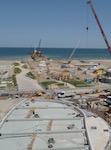
.jpg/9565bb79-c635-94a1-62b9-d0a45db370e3)
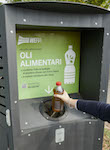

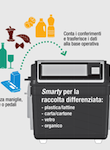

.jpg/468d051b-ba80-83a6-359d-7ef55eefd940)
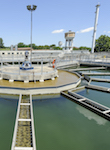
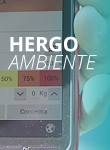
.jpeg/1d0e0770-1094-b22b-fce4-099f27c72978)